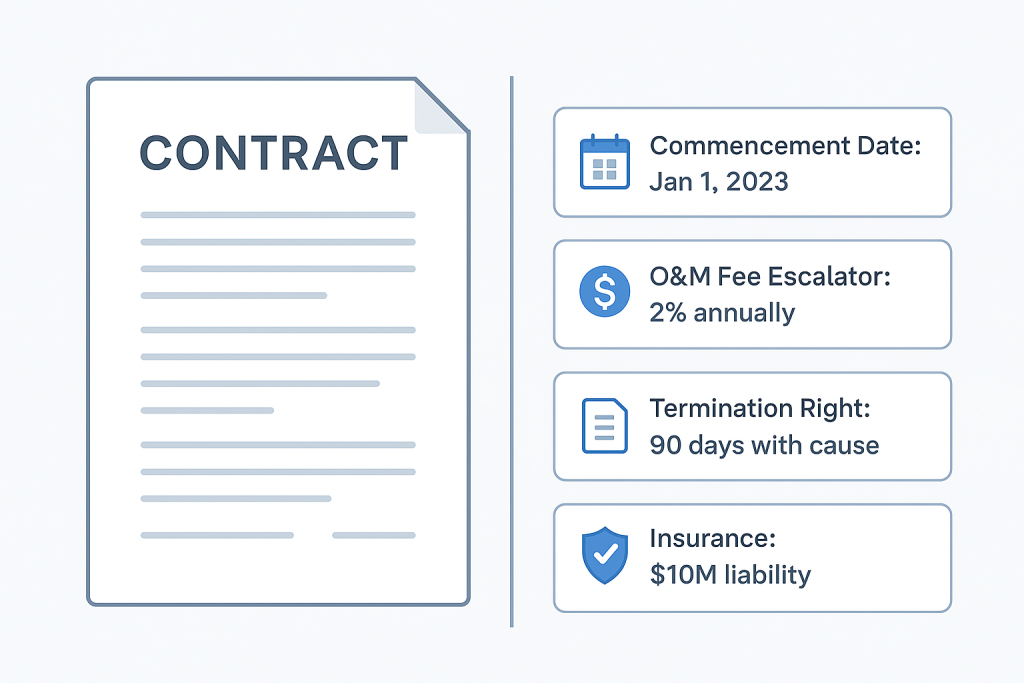Software Asset Management (SAM) is a pivotal business practice that revolves around managing and optimizing the utilization and disposal of software applications within an organization. Through effective software asset management best practices, organizations can ensure compliance, mitigate cybersecurity risks, and reduce unnecessary expenses by avoiding the purchase of unneeded software licenses. This strategic approach not only safeguards technology investments but also enhances operational efficiency by meticulously managing the software asset management lifecycle and software asset management process.
Embracing these practices allows for the automation of tasks such as inventory tracking, license management, and the establishment of robust IT policies, ensuring that technology deployments are fully leveraged. By implementing a software asset management process that adheres to established best practices, companies can confidently navigate the complexities of software compliance, expense management, and the overall software asset management lifecycle, thereby solidifying the foundation for a resilient and compliant IT infrastructure.
Assessing your software asset management maturity
Understanding the current state of your software asset management (SAM) is crucial for identifying areas of improvement and planning for future enhancements. The SAM maturity assessment is a structured evaluation that helps organizations gauge their progress across different stages. These stages, often described in models such as Gartner’s SAM maturity model, include Chaotic, Reactive, Proactive, Service, and Value. Each stage represents a specific level of capability in managing and optimizing software assets effectively.
Key indicators of a mature SAM program include comprehensive visibility into software entitlements, inventory, and usage across both on-premise and cloud environments. This visibility is essential for managing costs, ensuring compliance, and optimizing software investments. Organizations should aim to progress through the maturity stages by developing a clear roadmap that includes regular assessments, stakeholder engagement, and strategic improvements in their SAM processes.
This article might interest you: The Green Investment: A Closer Look at Renewable Energy Asset Management
To accurately assess SAM maturity, organizations may consider utilizing tools and frameworks such as the Microsoft SAM maturity model or seeking expertise from SAM consultants. These assessments provide a benchmark that helps in understanding the organization’s current position and in prioritizing actions to enhance the SAM program. Continuous improvement in SAM maturity involves adapting to new technological advancements and changing business needs, ensuring that the organization remains agile and compliant in its software management practices.
Key software asset management best practices
Determine Core Processes and Build a Team
To initiate robust software asset management, first identify the seven core processes: Software usage, purchasing, implementation, employee movement, disaster recovery, recycling, and license compliance. Establishing these processes sets a structured foundation for managing software assets efficiently. Concurrently, building a dedicated team is crucial. Hiring skilled SAM personnel or engaging third-party consultants can enhance the management of these processes. Secure stakeholder buy-in by clearly communicating the tangible benefits of effective software asset management, such as cost savings and compliance assurance.
Implement and Optimize SAM Solutions
Choosing and implementing the right SAM solution is pivotal and should align with the company’s size and infrastructure. Utilize SAM tools to discover and document all software assets, ensuring every piece of software is accounted for from procurement to disposal. Organize software licenses by department and usage to identify underutilized resources. This categorization aids in recycling and optimizing software licenses, thereby enhancing the return on investment. Regular evaluations of the SAM solutions help in maintaining relevance and effectiveness in rapidly changing tech environments.
Strategic Development and Integration
Develop a comprehensive SAM strategy that aligns with both business and IT strategies, ensuring software assets are managed from acquisition through decommissioning. This strategy should include integrating SAM into the overall asset management lifecycle, capturing all software asset information in the IT asset register. Additionally, implement end-to-end license management to monitor usage across all lifecycle stages, minimizing noncompliance risks and optimizing resource allocation. Regular updates to the SAM strategy and its integration into business processes are essential for adapting to new challenges and opportunities in asset management.
Common Challenges and Solutions in SAM
In the realm of software asset management (SAM), several challenges frequently arise, impacting the efficiency and compliance of IT operations. One prevalent issue is the underutilization of software licenses, which often leads to significant financial waste. Organizations find themselves paying for software that is rarely, if ever, used. To combat this, implementing a regular review and audit process is essential. This process helps identify and reallocate or terminate unnecessary licenses, thus optimizing software expenditure.
Another challenge is the overlapping of software assets, where different tools or applications provide similar functionalities. This redundancy not only confuses users but also strains the organization’s budget. A strategic approach to address this involves conducting thorough software inventory audits and usage analytics to determine the necessity and efficiency of each software asset. By consolidating software tools and eliminating duplicates, companies can streamline operations and reduce costs.
Moreover, organizations often struggle with compliance issues, particularly with licensing agreements for SaaS-based solutions like Microsoft 365. Noncompliance can lead to hefty fines and legal complications. To ensure adherence to licensing terms, businesses should invest in training for IT staff on the complexities of software licenses and consider hiring or consulting with certified software licensing experts. These professionals can provide a more thorough and holistic review of software usage and compliance than automated tools, ensuring that the organization remains within legal boundaries while effectively managing software assets.
Future Trends in SAM
As the landscape of software asset management (SAM) evolves, several key trends are set to shape its future. Firstly, the integration of Artificial Intelligence (AI) and machine learning is revolutionizing SAM. These technologies are enhancing the automation of IT asset inventories, enabling more accurate discrepancy identification, and providing predictive analytics for future IT asset needs. This shift not only streamlines processes but also offers deeper insights into usage patterns, significantly improving decision-making in IT asset management.
Furthermore, Cloud Asset Management is becoming increasingly critical as organizations continue to migrate to cloud environments. The focus here is on the meticulous discovery, cataloging, and classification of cloud assets. This trend underscores the necessity for SAM strategies that encompass not just on-premise software but also extensively manage cloud-based assets to ensure optimized cost and compliance across all platforms.
Another notable trend is the growing emphasis on the employee experience in relation to IT asset management. Organizations are now recognizing that ensuring employees have access to the necessary resources and technologies is crucial for maintaining high productivity levels. This holistic approach to SAM is about aligning IT asset management practices with employee needs, thereby fostering a more efficient and satisfied workforce.
These trends collectively point towards a more integrated, intelligent, and user-centered approach in the field of software asset management, promising enhanced efficiency and compliance for organizations navigating the complexities of modern IT environments.
Implement Effective Software Procurement and Usage Policies
Effective software procurement and usage policies are essential for managing software assets efficiently and ensuring compliance within an organization. Establishing clear guidelines for vendor-client relations helps to decrease the threat of costly audits and overspending on unused software. It is crucial to define responsibilities and roles clearly and to adopt standardized procedures for SaaS acquisition to streamline the procurement process.
Implement End-to-End SAM License Management
To maximize value retention and limit noncompliance, it is imperative to track software license usage across all domains and lifecycle stages. Implementing controls to prevent software license violations is also vital. This comprehensive tracking and management ensure that all software assets are utilized effectively, reducing wastage and enhancing compliance.
Plan and Report on SAM Costs
Planning software asset investments in advance and tracking SAM costs are crucial for maintaining budgetary control and making informed decisions. Reporting these costs to key stakeholders helps in managing relationships with SAM vendors and ensures transparency. Additionally, for any software or hardware purchase requests, a Hardware/Software Purchase Application must be in place to confirm that the requested items meet all necessary requirements and do not require additional equipment or change how or where data is stored.
Day-to-day SAM responsibilities also include enforcing software usage policies, managing SAM tools, and serving as a point of contact for software-related queries. These practices help in maintaining a robust framework for software asset management that supports the organization’s current and future operational needs while providing significant cost savings.
Software asset management lifecycle
The software asset management (SAM) lifecycle is a comprehensive process designed to manage software assets effectively from their initial acquisition to their eventual retirement. This lifecycle encompasses several stages, each crucial for maximizing the value and compliance of software assets while minimizing risks and costs associated with software management.
Planning Stage
The initial phase involves meticulous planning where the need for software is identified. This includes understanding the specific requirements of the organization and ensuring these needs are supported by thorough analysis. A controlled gatekeeping function is implemented to manage software requests, and a Software Catalog is developed to categorize and track these requests efficiently. This catalog aids in maintaining accountability and ensures that software acquisitions align with the organization’s strategic goals.
Acquisition and Deployment
Once the planning is complete, the acquisition stage focuses on purchasing the software within the set budget. This stage reviews software requests and checks for any spare licenses before proceeding with new purchases. Detailed records of these transactions are captured in an ERP system to facilitate potential future integrations. Following acquisition, the deployment stage ensures that software install packages are directly from the publisher and utilizes metering capabilities to verify optimal usage. Software that is not in use is de-installed to maximize the investment in these licenses.
Maintenance, Optimization, and Retirement
The maintenance stage involves regular monitoring of software performance and the prompt installation of updates to ensure functionality and security. Optimization is continuously carried out to confirm that software is installed on appropriate devices, redundant software is removed, and licenses are reallocated to reduce costs. Finally, the retirement stage involves the removal of outdated or unused software and the re-harvesting of licenses to replenish the license inventory, ensuring that all software assets remain current and secure. This stage is critical in mitigating risks and maintaining compliance with various software regulations.
Discover: From Risk to Resilience: Renewable Energy Risk Management Challenges

Software asset management process
Software asset management (SAM) is a critical business practice that ensures the effective management, optimization, and compliance of software applications within an organization. The SAM process encompasses various components that are essential for maintaining operational efficiency and reducing financial risks associated with software assets.
Core Components of SAM
The SAM process is built around several key components that ensure comprehensive management of software assets:
- Software Inventory: Maintaining an up-to-date inventory of all software assets to ensure visibility and control.
- License Management: Ensuring that all software licenses are managed properly to avoid legal issues and to optimize the use of software.
- Compliance: Regularly checking software usage against license agreements to avoid non-compliance penalties.
- Lifecycle Management: Overseeing the entire lifecycle of software assets from acquisition to disposal to maximize value and efficiency.
Strategic Implementation Steps
Implementing an effective SAM process involves several strategic steps:
- Building a Dedicated Team: Assemble a team responsible for managing all aspects of SAM, from planning to execution.
- Defining Goals and Objectives: Clearly outline what the organization aims to achieve with its SAM strategy.
- Creating a SAM Policy: Develop a comprehensive policy that guides the procurement, use, and management of software assets.
- Auditing Current Software Solutions: Conduct audits to assess the current state of software management and identify areas for improvement.
- Organizing Software Inventory: Systematically categorize and manage software assets to enhance visibility and control.
- Tracking Software Usage: Monitor how software is being used within the organization to optimize resources and reduce waste.
- Training and Education: Implement training programs to educate staff about SAM policies and procedures.
Technology and Tools
To support the SAM process, organizations should invest in advanced SAM tools that offer features like:
- Automated Discovery and Inventory Capabilities: Tools that automatically detect and inventory all software assets across the organization.
- License Management Features: Systems that help manage licenses and ensure compliance with software agreements.
- Compliance and Audit Support: Features that assist in preparing for audits and ensuring compliance with licensing terms.
- Reporting and Analytics: Tools that provide insights into software usage and optimization opportunities.
By adhering to these structured components and strategic steps, organizations can effectively manage their software assets, reducing costs and risks while enhancing overall productivity and compliance.
Conclusion
Throughout this article, we’ve explored the multifaceted discipline of software asset management (SAM), detailing its crucial role within organizations aiming for optimized software utilization, compliance adherence, and cost-efficiency. By delving into the best practices, challenges and solutions, as well as future trends, it’s clear that SAM is not just a regulatory necessity but a strategic asset that, when effectively managed, can significantly contribute to an organization’s operational resilience and financial prudence.
In understanding the ramifications of SAM, it becomes evident that proactive engagement in its processes—ranging from meticulous planning and acquisition to the strategic deployment, maintenance, and eventual retirement of software assets—is indispensable. As businesses continue to evolve in an ever-changing technological landscape, the principles laid out in this discourse serve as a guiding framework to navigate the complexities of software asset management. Thus, acknowledging and acting upon the insights shared herein not only prepares organizations for current challenges but also fortifies them against the uncertainties of the future.
FAQs
What are the recommended best practices for IT asset management?
Best practices for IT asset management include building a comprehensive asset inventory using various discovery sources, tracking the entire lifecycle of assets, centralizing the management of software and licenses, integrating IT asset management (ITAM) with other IT service management (ITSM) practices, monitoring key ITAM metrics, and conducting regular IT asset audits.
What are the five fundamental components of asset management?
The core elements include Assets, Service Level, Criticality, Life Cycle, and Funding. Each of these components is essential and is accompanied by pivotal questions that aid in effective management.
What are the foundational pillars of Software Asset Management (SAM)?
The three foundational pillars of Software Asset Management are software license management, software vendor management, and software spend management. These pillars are essential for building a strong SAM strategy and fostering continuous improvement.
What are the three key principles of asset management?
The principles of asset management include understanding “Failure Modes,” as not all assets fail in the same manner; “Probability,” recognizing that assets of the same age do not necessarily fail at the same time; and “Consequence,” acknowledging that not all failures result in the same level of impact.
Interested in navigating your renewable energy contracts without involving a legal team? Our expertise lies in simplifying this process, ensuring it’s efficient and doesn’t require lawyers. Feel free to request a demo to discover how we can help optimize your operational workflows.
Return to Contract Power whenever you have questions about managing your contracts or visit our blog if you need information.




